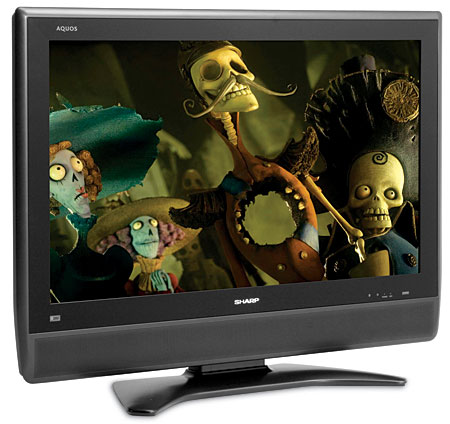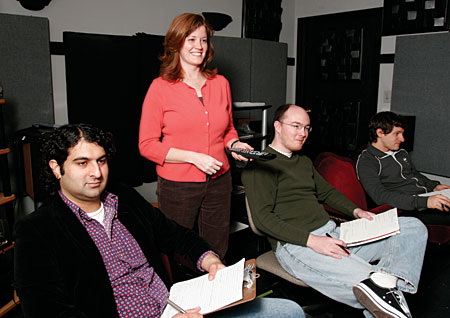HT's Inaugural LCD Face Off Sharp AQUOS LC-37D40U LCD HDTV
If you like LCDs, you'll like the Sharp.
Should it come as a surprise that the winner of our LCD Face Off was the most LCD-like? I don't know, but that's what happened. The LC-37D40U earned three first-place votes and one second-place vote. At $3,000, the Sharp ties the Sony for least expensive in the Face Off. It's the only TV in the group that doesn't offer automatic aspect-ratio detection, but it does include two HDMI inputs and a backlit remote, as well as a light sensor to adjust the backlight automatically. The TV's design was the most curvaceous, but several panelists noted the flimsy feel of the plastic cabinet.

When I say that the LC-37D40U is the most LCD-like, I mean that it exhibited the strengths and weaknesses common to this technology, but our panel generally agreed that it served up the most balanced performance. In the strengths column, this TV has an excellent contrast ratio, outstanding detail, and solid color reproduction. Out of the box, its color temperature measures closest to 6,500 K in the mid to high frequencies, but it spikes up into the bluish region at 20 IRE. We wouldn't be able to fix a spike like this, even if we could calibrate this TV, which we couldn't—so it's a good thing the temperature is accurate throughout the rest of the range.

That low-frequency spike manifested itself as a purplish hue in our darker test scenes. While it was inaccurate, no one found this to be distracting. Nikhil even said that this TV rendered "the most believably moonlit" night in Corpse Bride. Everyone felt that the fleshtones were more neutral than either the Sony (at least before calibration) or the Hitachi. Geoffrey felt that this TV rendered a more accurate green than the others, and Nikhil agreed, stating that the greens were less "electric looking."
 We all agreed that the Sharp was definitely, ahem, the sharpest. Both DVD and HDTV material was excellently detailed. Geoffrey and I both thought there was something slightly unnatural about the detail, as if edge enhancement were making it look a bit too crisp. However, our test discs showed no evidence of edge enhancement. Light-to-dark transitions were solid but not outstanding, so the image wasn't quite as smooth as that of the Hitachi.
We all agreed that the Sharp was definitely, ahem, the sharpest. Both DVD and HDTV material was excellently detailed. Geoffrey and I both thought there was something slightly unnatural about the detail, as if edge enhancement were making it look a bit too crisp. However, our test discs showed no evidence of edge enhancement. Light-to-dark transitions were solid but not outstanding, so the image wasn't quite as smooth as that of the Hitachi.
When it comes to light output, this TV has remarkable range: from 122 ft-L at maximum backlighting to 17.76 ft-L at minimum backlighting, wherein it also produced the best black level we've ever measured in an LCD: 0.014 ft-L. To match its light output with the others, I had to set the backlight at 50 percent, which our measurement tests revealed to be the poorest contrast ratio for this TV: a still-good 888:1. Even at its least optimum setting, the LC-37D40U earned praise from our panelists. Geoffrey pointed out that this TV struck the best balance between light output and black level, although, at times, John and Nikhil thought the image was somewhat washed out.
What kept Geoffrey from joining the rest of us in voting the Sharp number one? He simply couldn't get past the poor viewing angle and the motion blur. Yep, this is an LCD, all right. It didn't do a good job rendering the cue ball in our motion-blur test, nor could it hold onto that excellent detail whenever the camera panned the crowd in our HDTV basketball demo. Viewing angle was indeed a concern, as saturation and richness dropped off when you moved even one chair over. And, unfortunately, this is the only TV that doesn't include a swiveling stand to help make up for viewing-angle limitations. The rest of us noted these issues, but we ultimately felt they were less problematic than the issues we encountered in the other TVs.
Highlights
• Excellent black level combined with terrific light output
• Very detailed image
• Solid color reproduction




























































